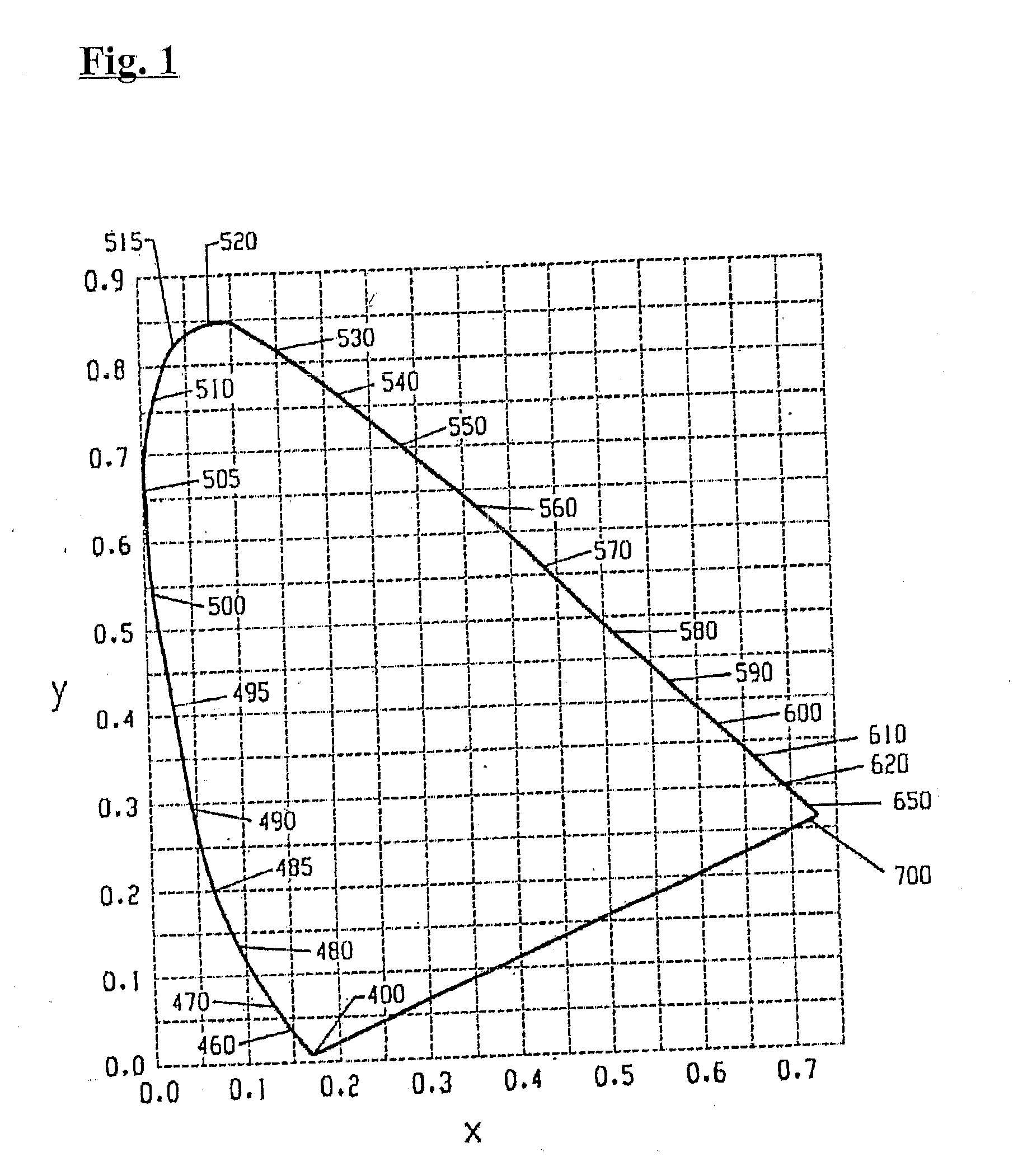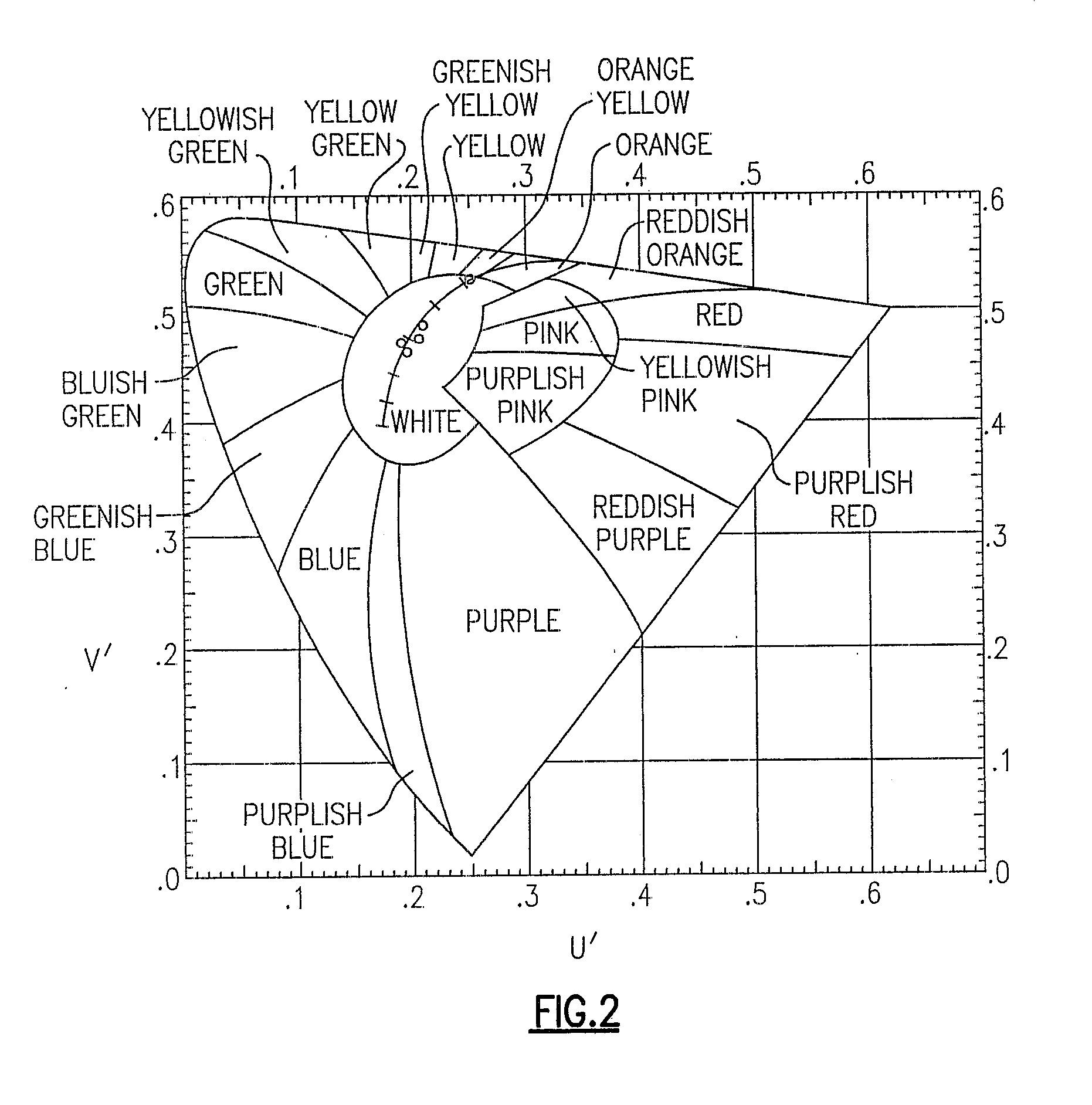Lighting device and method of lighting
- Summary
- Abstract
- Description
- Claims
- Application Information
AI Technical Summary
Benefits of technology
Problems solved by technology
Method used
Image
Examples
first embodiment
[0225]FIG. 4 is a schematic illustration of a lighting device in accordance with the present invention.
[0226] Referring to FIG. 4, AC current is supplied to the lighting device 10 via a cord 11. The lighting device includes a master currents regulator 12 which is switchable among three settings, a first master currents setting, a second master currents setting and a third master currents setting. The lighting device also includes a first current regulator 13, a second current regulator 14 and a third current regulator 15. The first current regulator 13 is electrically connected to a first series of light emitting diodes 16 which emit red light, the second current regulator 14 is electrically connected to a second series of light emitting diodes 17 which emit blue light, some of which is converted by lumiphors (positioned adjacent to the respective light emitting diodes 17), such the output light is green, and the third current regulator 15 is electrically connected to a third series...
second embodiment
[0242]FIG. 5 is a schematic illustration of a lighting device in accordance with the present invention.
[0243] The second embodiment is similar to the first embodiment, except that the second embodiment includes (1) a first series of light emitting diodes 28 which emit blue light, some of which is converted by lumiphors such that the output light is white (instead of the light emitting diodes 16 which emit red light), (2) a second series of light emitting diodes 29 which emit yellow light (instead of the light emitting diodes 17 and the associated lumiphors), and (3) a third series of light emitting diodes 30 which emit red light (instead of the light emitting diodes 18 which emit blue light).
third embodiment
[0244]FIG. 6 is a schematic illustration of a lighting device in accordance with the present invention.
[0245] The third embodiment is also similar to the first embodiment, except that the first series of light emitting diodes is represented as “A”, the second series of light emitting diodes is represented as “B”, and the third series of light emitting diodes is represented as “C”, to signify that the first, second and third series of light emitters can be of any desired respective colors, and the third embodiment also includes a current regulator identified as “N+1” to indicate that the device can include any desired number of groups of solid state light emitters and associated current regulators. For example, in representative additional embodiments: [0246] (1) “A” can signify a series emitters which emit white light, “B” can signify a series of emitters which emit yellow light, and “C” can signify emitters which emit red light; [0247] (2) “A” can signify a series emitters which em...
PUM
 Login to View More
Login to View More Abstract
Description
Claims
Application Information
 Login to View More
Login to View More - R&D
- Intellectual Property
- Life Sciences
- Materials
- Tech Scout
- Unparalleled Data Quality
- Higher Quality Content
- 60% Fewer Hallucinations
Browse by: Latest US Patents, China's latest patents, Technical Efficacy Thesaurus, Application Domain, Technology Topic, Popular Technical Reports.
© 2025 PatSnap. All rights reserved.Legal|Privacy policy|Modern Slavery Act Transparency Statement|Sitemap|About US| Contact US: help@patsnap.com



